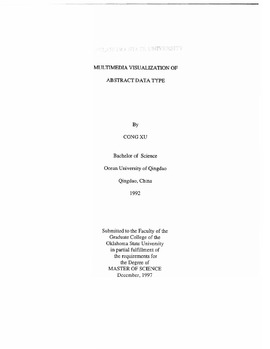| dc.description.abstract | In order to understand the complexity of the real world, people build abstract descriptions or models. By omitting details and including just the relevant factors, a model can provide a useful tool for understanding a particular problem. A model must be proved, tested and solved. Systematized techniques for analyzing models are called algorithms [22]. Models and algorithms must be represented in a way that is clear and informative. "A picture is worth a thousand words." Visualization is a method of computing [33]. It transforms the symbolic into the geometric, enabling researchers to observe their simulations and computations. Today, the study of visualization has expanded greatly with the variety of representations [33], such as computer multimedia, graphics, and graphical user interfaces. Visualization uses carefully designed representations to help people understand complicated models and algorithms. Nowadays visualization has become- one of the most exciting and rapidly growing fields in computer science. It has greatly affected such diverse areas as education, science, industry, business, and military than ever before. One of the benefits of using visualization in education is that it involves the right side of the human brain in the learning activity [21]. The perceptual work is done by the right hemisphere of human brain that initially processes pictorial information. Then the left hemisphere does the analysis work. If we use both graphics and wordst more of the brain will be involved in processing the information. This results in better and fast understanding of abstract concepts. | |
